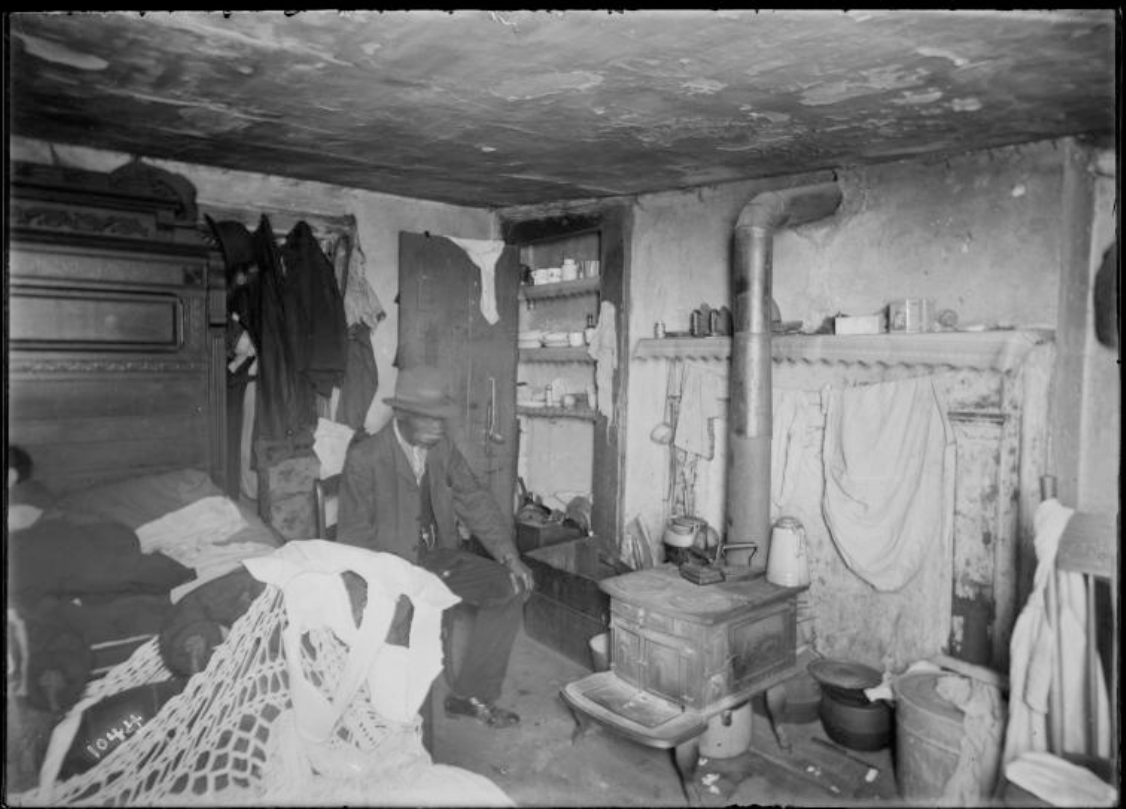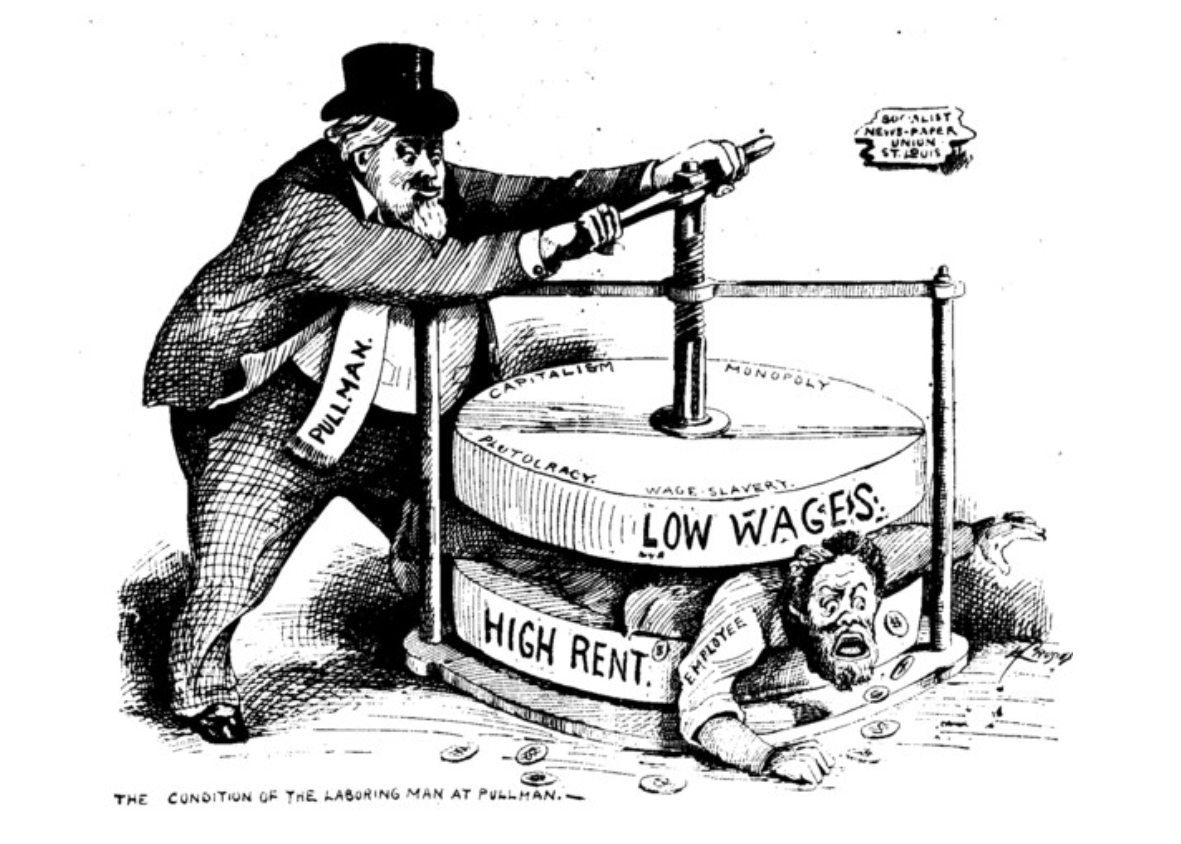
Prelude
The Compliance of a Growing Population
The new wave of immigrants from Northern and Western Europe often settled in major port cities like New York. However, the influx of immigrants pouring in also led to an increasing demand for more housing spaces. As a low-effort, cost-effective solution, tenement houses were constructed to cram as many people as possible into a space meant for a single family.
“houses…where filth and garbage, nastiness and stench struggled with offal, putridity and noisomeness for the supremacy."
~ Our City's Condition, New York Times, 1865

Interior of a tenement house, New York Tenement House Department, 1902-1914.

The Condition of the Laboring Man at Pullman, 1894.
Financial Limitations
Since immigrants were not able to negotiate higher wages, being replaceable, their minimal income was often wholly spent just to keep themselves and their families fed. Trapped in this cycle of poverty, immigrants were stagnant when it came to their social standing. Not to mention they were also exploited by the upper class through political machines in order to generate votes.
"Ligitimate [sic] prospects of a future of honour and independence are lost …forever"
~ Excerpt from The Irish in America, John F. Maguire, 1868
Public Sentiment
Many working class New Yorkers viewed immigrants unfavorably as it meant greater competition for jobs and fewer opportunities to negotiate wages. This, along with a growing American sentiment of exceptionalism, led to the formation of the nativists. They were a large group of the disgruntled Americans who targeted new immigrants by spreading rumors and tearing down their reputations, further confining the latter into the lowest rungs of society.
Needless to say the general population couldn’t care less about the well-being of their new neighbors.
“[the plague was] almost exclusively confined to the lower classes of intemperate dissolute & filthy people huddled together like swine in their polluted habitations…scum of the city”
~ John Pintard, founder of New York Historical Society, c. 1833